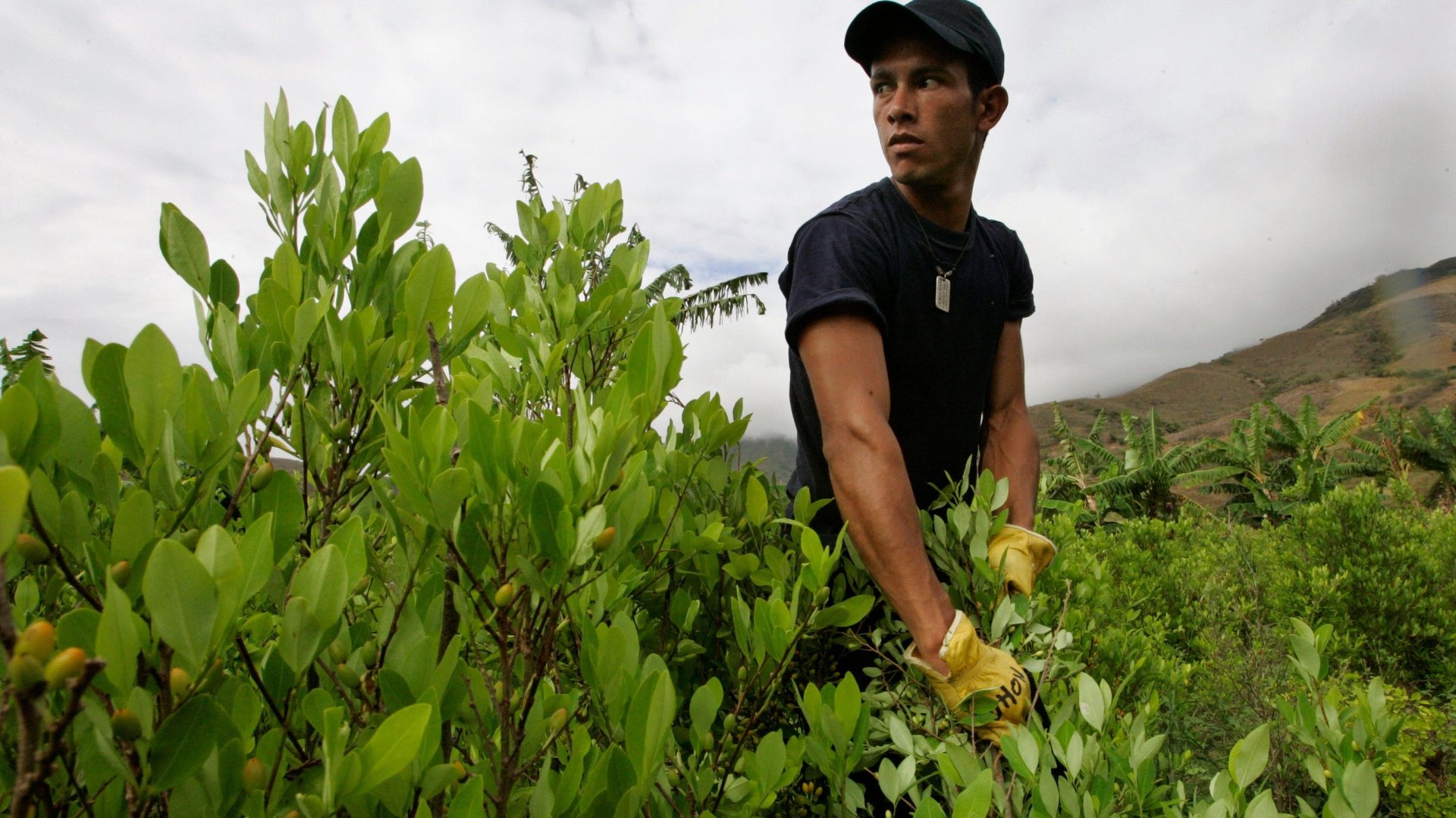Colombia is still soft-pedaling its war on drugs despite record cocaine production
President Gustavo Petro's government has been pushing education and alternative crops ever since he took office in Colombia last October

The coca plants in Colombia just keep growing—and so does cocaine production.
Suggested Reading
The world’s largest cocaine producer set new records in the estimated production of the illegal drug and the cultivation of the coca leaf, according to a United Nations report released yesterday (Sept. 11).
Related Content
Land planted with coca surpassed 230,000 hectares in 2022, up 13% from the previous year, the UN estimated using satellite imagery, field visits, and community engagement, as well as secondary information from the government of Colombia and other entities.
The uptick comes as the government led by Gustavo Petro, the Colombian president, has moved away from a combative “war on drugs.” As Colombia’s first leftist president, Petro took office last August and has focused on incentivizing farmers to move away from cocaine production without any punitive threat. The government pitched legal crops such as sugar cane and pineapple, or animal husbandry, as an alternative to coca farming; cash subsidies were doled out to those who signed up.
Petro’s strategy has been a stark departure from that of his right-wing predecessor, Iván Duque, who forcefully eradicated coca fields and even tried unsuccessfully to conduct aerial fumigation.
The numbers so far suggest that Petro’s attempts aren’t working, and have perhaps even contributed to food insecurity in Colombia. But it may also just be too soon to tell.
Quotable: Viewing drugs as a health problem instead of a military problem
“What I propose is to have a different and unified voice that defends our society, our future and our history and stops repeating a failed discourse...It is time to rebuild hope and not repeat the bloody and ferocious wars, the ill-named ‘war on drugs’, viewing drugs as a military problem and not as a health problem for society.”
—Colombian president Gustavo Petro at the Latin American and Caribbean Conference on Drugs, held in the Colombian city of Cali on Sep. 9
Cut coca demand, not supply
Colombia and other Latin American countries, which participated in a Sep. 9 conference, concluded that the rampant production and consumption of drugs must be tamed by cutting demand—by educating the public and fighting inequality, poverty, lack of opportunities, and violence.
Curbing the supply of drugs is only likely to feed illicit dealings like arms trafficking, organized crime, migrant smuggling, money laundering, and more. “Every dollar that is dedicated to cutting supply makes the price grow,” Petro said.“If the price increases, drug traffickers have more money to buy rifles, to buy armored vehicles, to buy missiles, to buy politicians, to buy senators, to buy generals, to buy judges, to buy presidents.”
By the digits: The business of coca and cocaine in Colombia
65%: The share of the world’s total coca crop that is concentrated in Nariño and Putumayo, Colombian regions that border Ecuador—an emerging drug trafficking hotspot—and Norte de Santander, which shares a border with Venezuela.
20,000 hectares: The area of land in Putumayo that has been registered as “the greatest increase in the dynamics of coca cultivation”
1,738 metric tons: The rise of cocaine output in 2022, representing a 24% surge year-on-year from 1,400 metric tons in 2021
49%: The share of coca grown in special management areas: 19% on the lands of black communities, 15% in forest reserves, 10% in indigenous reservations, and 5% in national natural parks
200,000: The number of families in Colombia that depend on coca cultivation for their livelihoods, according to the Brussels-based think tank International Crisis Group
7 months: The time it takes for coca to produce the first harvest, versus 16 months for pineapple and four years for coffee
3-4: The number of harvests that coca yields annually, versus two for coffee. Additionally, climate change is reducing the areas suitable for coffee farming, so farmers are swapping it out for the more adaptable and durable coca
5 times: How much more territory is farmed for coca today, compared to the days of Pablo Escobar and his Medellín cartel around the 1980s. Also, yields are much higher today, courtesy improved agricultural techniques and more productive strains of the coca leaf
Throwback: A failed shift to alternative crops
As part of a 2016 peace agreement, tens of thousands of Colombian families signed up for crop substitution, many voluntarily uprooting or abandoning their coca shrubs. But government payouts were incomplete and erratic amid budget constraints and the mismanagement of public funds. After their hopes were dashed, many farmers dropped out and restarted illegal coca planting, especially in remote zones where transporting crops to market is tough and the consumers of non-coca products are limited.
One more thing: Petro wants to legalize cannabis in Colombia
The House in the Colombian legislature passed a bill to legalize marijuana possession for personal use, but the Senate voted it down in June. President Petro, though, has expressed support for legalizing marijuana, freeing people incarcerated over it, and exporting it to other countries if and when it becomes legal.
Related stories
🇪🇨 Ecuador’s anti-corruption presidential candidate was shot dead
